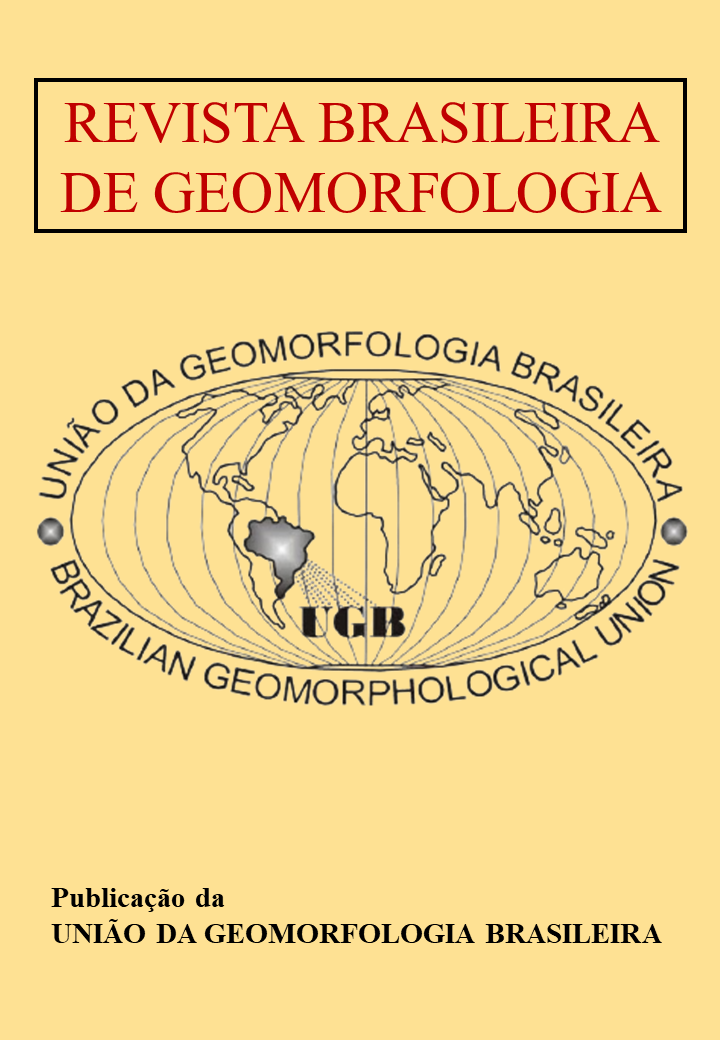Pseudo Sliding Plane in Super-Thick Soil Materials Deposit at Ngasinan Deep Landslide Area
DOI:
https://doi.org/10.20502/rbgeomorfologia.v25i2.2540Palavras-chave:
sliding plane, thick soil, landslideResumo
The research focuses on analyzing landslides within an area abundant in varying sizes of these occurrences. The
research is being conducted in Ngasinan, Bogowonto watershed area in Indonesia. These landslides happened in the
consistently loose, deep volcanic sediment, referred to as soil material, over 10 meters thick. The goal of this research is to assess
potential sliding plane triggering these landslides within this soil material. To achieve this, a blend of geophysical and soil
science methodologies is applied. Geophysical measures, specifically resistivity parameters, discern distinctions within the
layers of soil material, determined through geoelectric methods. Additionally, soil science factors like Cation Exchange Capacity
(CEC) and dispersing ease are used to evaluate the layers with pseudo-sliding plane. Findings demonstrate varied resistivity
values, CEC, and water content across the different material layers. The N1 layer, situated at a 5-meter depth, exhibiting
characteristics of 5Y 8/1 color (white), shows a resistivity of 8.7 Ωm, a CEC of 54 meq/100g, and high dispersible. Identified as
a potential cause of initial landslides or sliding planes, the N1 layer's distinctive values in resistivity, CEC, and water content
validate it as an area of concern for potential landslides. These findings confirm that differences in these factors can serve as an
early identification for potential landslide-prone areas.
Downloads
Downloads
Publicado
Como Citar
Edição
Seção
Licença

Este trabalho está licenciado sob uma licença Creative Commons Attribution-NonCommercial 4.0 International License.
Autor(es) conservam os direitos de autor e concedem à revista o direito de primeira publicação, com o trabalho simultaneamente licenciado sob a Licença Creative Commons Attribution que permite a partilha do trabalho com reconhecimento da autoria e publicação inicial nesta revista.










